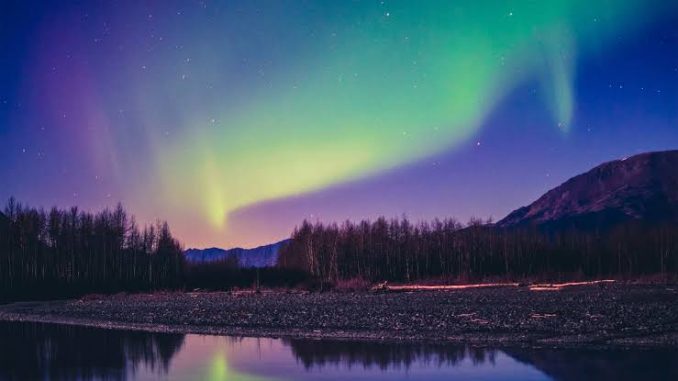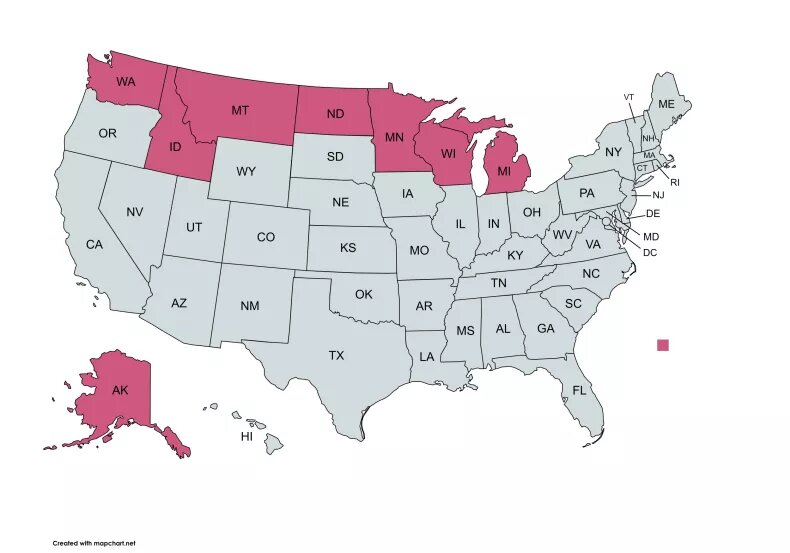
More Chances To See The Northern Lights Ahead: Map Shows States Where Northern Lights Would Be Visible Across US This Week
The northern lights may dazzle skywatchers again across the U.S. this week, with a map showing potential visibility.
Thanks to an ongoing geomagnetic storm, this could be another rare opportunity to witness the spectacular light show for those who missed it or wish to see it again.
Normally confined to regions closer to the poles, such as Alaska and Canada, the northern lights, also known as the aurora borealis, or aurora, has been seen across parts of Europe and North America on several occasions so far throughout 2024.
The aurora was recently spotted as far south as northern parts of the continental U.S., including New England and New York.
The geomagnetic storm, caused by a burst of solar activity known as a coronal mass ejection (CME), is expected to affect Earth’s magnetic field over the next few days.

An update released by The National Oceanic and Atmospheric Administration’s (NOAA) Space Weather Prediction Center shows that the storm could be strong enough to make the lights visible over the next two days in several northern U.S. states, as well as Canada.
According to the update, any state caught in the red view line on the image could possibly see the aurora over the next two nights.
As shown on the map, some of the best chances for viewing the northern lights will occur in the following states: Washington, Idaho, Montana, North Dakota, Minnesota, Wisconsin, Michigan, and possibly Alaska if conditions hold.
“The aurora may be faintly visible tonight in Minnesota, North Dakota, and the Upper Peninsula of Michigan,” the NOAA told Newsweek via email on Wednesday.
For those hoping to view the aurora, experts suggest heading to rural areas with clear skies, away from city lights. Since the lights are most visible in dark, open spaces, avoiding urban centers will increase the chances of spotting this celestial phenomenon.
https://247sportcamp.com/wp-content/uploads/2024/10/updated-map-1.webp
Checking local forecasts for clear skies will also help you find a good spot to see the lights. The best time to catch them will be during the night.
The northern lights occur when charged particles from the sun collide with gases in Earth’s atmosphere. The resulting reaction produces shimmering curtains of light, which can appear in hues of green, pink, red, and purple, depending on the type of gas involved in the interaction.
While the lights are more common in high-latitude areas, strong geomagnetic storms can push the aurora further south, offering a rare treat for those in lower latitudes.

Geomagnetic storms and auroras are difficult to predict with precise timing, though the 11-year solar cycle influences how often such events occur.
As previously reported by The Associated Press and Newsweek, the sun is currently at the maximum phase of its 11-year cycle, making solar surges and northern lights more frequent.
This active period was expected to last for at least another year, though when solar activity will peak won’t be known until months after the fact, according to NASA and the NOAA, as reported by AP via WIBW.
As solar activity increases during this current cycle, auroras might be visible more frequently in the coming months.
For now, skywatchers across the northern states of the U.S. and Canada, are advised to keep an eye on the skies this week and take advantage of this rare opportunity once again to witness one of nature’s most stunning light shows.
Leave a Reply